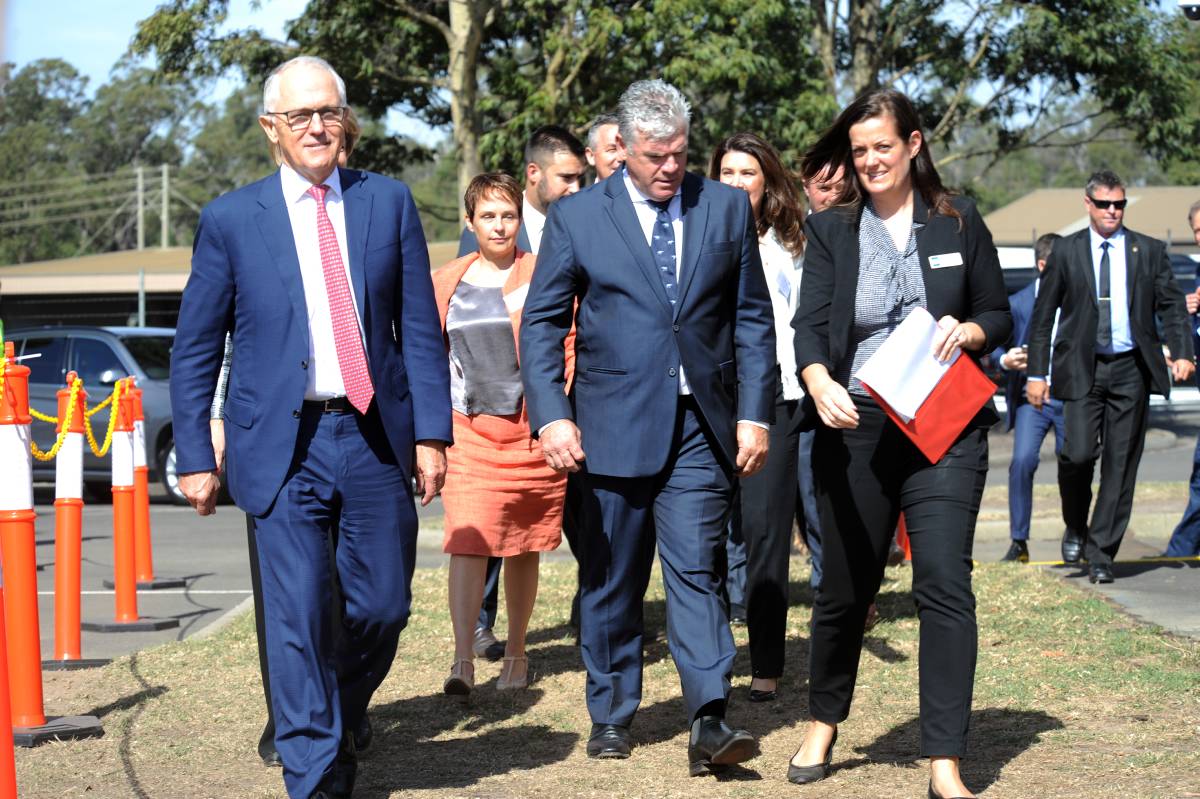Thursday’s announcement of a coal to hydrogen pilot project using Latrobe Valley coal could “potentially kick-start a new technology base” for the region, Brown Coal Innovation Australia chief executive Brian Davey says.
Prime Minister Malcolm Turnbull visited Loy Yang A last week for the official launch of the Hydrogen Energy Supply Chain project, which is expected to lead to the creation of 400 local jobs.
The almost $500 million project is being developed by a Japanese consortium headed by Kawasaki Heavy Industries and has received $50 million each from the state and federal governments.
Mr Davey’s organisation is tasked with finding alternative, low-emissions uses for brown coal and counts the CSIRO, Victorian government and Monash and Federation universities among its members.
He said there were a “confluence of factors in favour” of the project, including its access to nearby carbon capture and storage sites.
“One of the things we’re absolutely in need of is a foundation project that’s going to take the place of power generation,” Mr Davey said.
“We feel reasonably confident that there’s not going to be a power station in the short to medium term … in which time we could see two or three power stations shut down.”
The pilot plant which will be built at Loy Yang will produce hydrogen gas from brown coal using gasification technologies.
It will process up to 160 tonnes of brown coal and up to three tonnes of gaseous hydrogen over one year of operation, which will then be trucked to the Port of Hastings for shipment to Japan.
But for the project to proceed to commercial stage it will require carbon capture and storage, such as the proposed Carbon Net Project.
Carbon capture and storage will not be a feature of the pilot operation.
The Carbon Net Project is investigating the potential for establishing a commercial-scale carbon capture and storage network in the region which would then be stored underground in offshore storage sites.
Earlier this year the project undertook an off-shore survey at Golden Beach to assess whether it was suitable for carbon storage.
Mr Davey said the coal to hydrogen project could provide “the backbone for Carbon Net to succeed”.
RMIT School of Engineering senior lecturer Bahman Shabani said he was “trying to be positive” about the project, but was concerned about the “uncertainty about CCS technologies”.
“The economic viability of this technology is still unproven, sites to bury CO2 are not of unlimited capacity, there is always risk for CO2 leakage that can be harmful to the environment, and lots of other unknown impacts that significantly add to the risks associated with large-scale deployment of this technology,” Dr Shabani said.
“On the other hand, the move can be seen as a step forward towards deploying hydrogen, as the hydrogen extracted can also encourage our domestic market to try hydrogen.”
He said his preferred option for generating hydrogen was using renewables and electrolysis “completely emission-free and environmentally friendly”.
His position was shared by Environment Victoria campaigns director Nick Aberle who said the project would create “dirty hydrogen”.
“CCS doesn’t exist at this stage; we don’t have the technology. It’s like a mirage on the horizon, and CCS won’t exist in three years when this pilot finishes,” Dr Aberle said.











